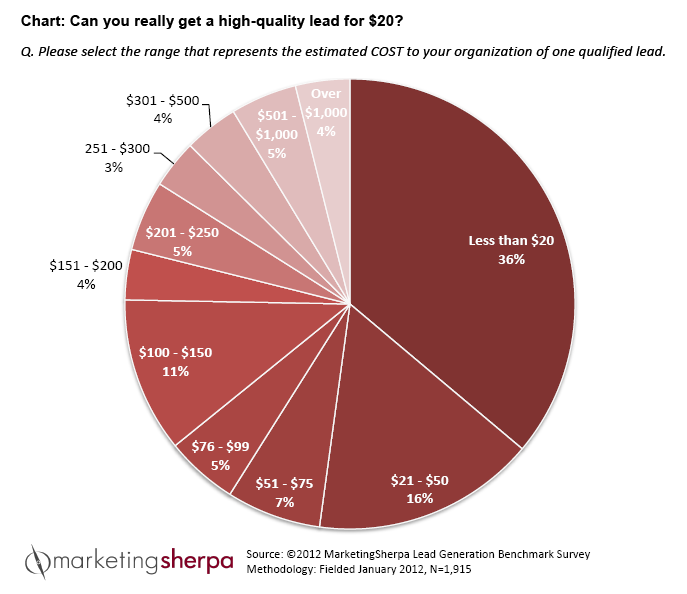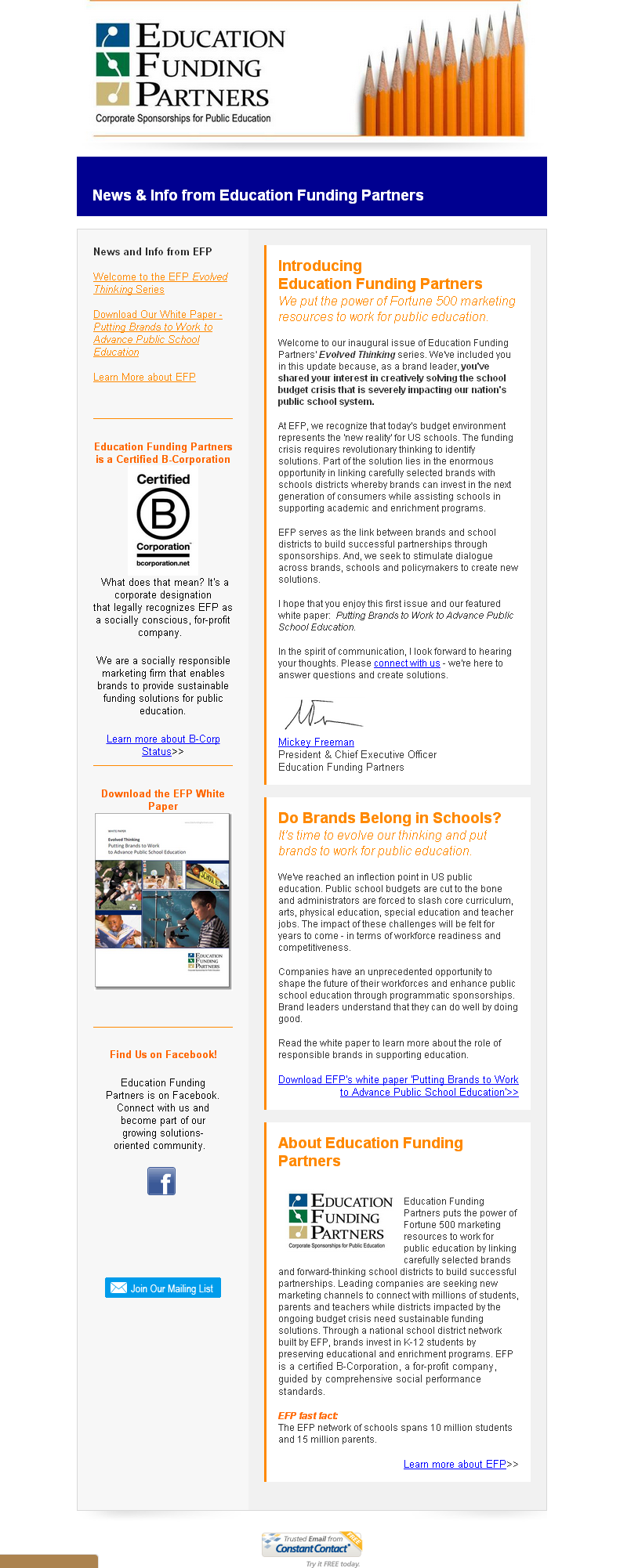Lead Generation: 5 steps for managing cost and quality of leads
Organizations target quality, but they don’t pay for it. That is one of the latest discoveries from the MarketingSherpa 2012 Lead Generation Benchmark Report (free 10-page excerpt at this link). Let’s take a look …
“In the past, it may have been acceptable to assume that if an organization can lower their upfront cost-per-lead, they will also increase lead generation, improve ROI and drive revenue,” said Jen Doyle, Senior Research Manager, MECLABS.
“This makes sense when calculated on a spreadsheet, but when rolled out in an evolved marketplace with an empowered buyer, it’s going to take a lot more than simply lowering the cost-per-lead to achieve the goals of today’s CMO.”
So how can you balance cost and quality of leads?
Step #1: Measure
What gets measured gets done. You cannot manage cost and quality of leads without some accurate numbers.
“It is impossible to determine a lead’s cost if you are not measuring where leads come from in the first place. And, this doesn’t just mean tracking paid search leads or online leads, but all leads, even those coming in on the phone,” said Jason Ferrara, VP of Marketing, Ifbyphone.
Step #2: Define success
However, numbers aren’t enough. Having a good measurement program is just the price of admission. Now you have to put meaning behind those numbers. Just because you can express cost as a dollar figure doesn’t mean you’ve reached a solid definition of a cheap or expensive lead. Words like “quality” and even “cost” can be very vague.
As much as we enjoy the specific numbers to latch onto in the above chart, and while it is a helpful starting point to understand the cost-per-lead for other marketers, you must focus on the lead cost for your organization to really improve performance.
“If you’re selling a digital color printing press at $500,000 each, your cost-per-lead might be in the thousands. If you’re selling a checking account, it would be much lower,” said Frank Magnera, B2B Account Director, Catalyst. “Before you can get to what a high-quality lead costs, you need to define/determine what a high-quality lead is worth to you. And, no two organizations will answer that question the same way.”
Step #3: Determine the best value
Defining success for cost goes hand in hand with defining success for quality. Obviously, the goal is not getting a lead — the goal is getting a sale. That usually involves an entire process. Therefore, you need to understand which leads are truly sales-ready (not just “qualified,” a definition that can vary from organization to organization), which require significant additional marketing effort, lead nurturing and sales support, and which don’t close at all.
While it can be difficult to predict exactly how a lead will turn out, hindsight is 20/20. Look at your past leads to help understand which lead tactics, channels and sources are truly valuable, and which, even if they are cheap up front, cost more and deliver less in the long run.
Step #4: Target effectively
The above analysis should help you sharpen your aim. Once you understand whom to target, you have to build campaigns around those segments and channels. Kim Ketchel, Vice President of Marketing, Education Funding Partners, recommends email marketing.
“If you are a startup on a tight budget and need to connect with multiple audiences to define an offering and strongly position your company within a market, email marketing still delivers the best bang for the buck,” said Kim. “Email marketing is especially effective for the delivery of targeted thought leadership campaigns.”
Kim shared an example from her company’s own segmentation efforts. To define its model, Education Funding Partners has begun to articulate its position through a series of whitepapers, which are distributed through segmented databases via an email marketing service.
“The size of the database, the cost of the whitepapers and the monthly service fees combined and divided by overall audience participation equates to less than $20 per lead,” Kim said. “While the sales cycle is long since it involves multiple parties, we’ve seen an immediate impact. The campaign was successful. We have an entire whitepaper series forthcoming.”
Here is an example of one of the company’s email sends, and you can see the whitepaper here:
Step #5: Go multichannel
Since the people you’re targeting likely use more than just one channel in their daily interactions, the most efficient and effective way to reach them is by using more than one channel.
“Marketing leaders should be encouraged to make sure that email and social teams are working together because, quite simply, it makes financial sense to do so,” said Matt Gault, VP of Channel Strategy, Yesmail Interactive.
In a recent study, Yesmail found Facebook campaigns had a 50% lift when supported by email, and a 100% lift when supported by multiple email campaigns.
Likewise, Twitter campaigns had a 20% lift when supported by email, and a 40% lift when supported by multiple email campaigns.
One caveat of this study for lead generation marketers – it focused on 20 top retailers. As mentioned in Step #2, your lead generation needs might vary greatly from other organizations. For example, for your target market, you may find LinkedIn is a more effective channel to group with email than Facebook. However, even if that is the case, the general principle to “hit it where they are” still applies.
Related Resources:
MarketingSherpa 2012 Lead Generation Benchmark Report (free 10-page excerpt)
It’s the Relationship, Stupid: Plugging the Gap between Lead Generation and Marketing Automation (PDF download via Catalyst)
B2B Lead Optimization: Why cheap leads can be so expensive
Practicing What You Preach – List Growth (via Yesmail)
Infographic: Close more leads by improving lead response time (via Ifbyphone)
Categories: Lead Generation controlling costs, cost per lead, lead generation, lead quality, marketing management











